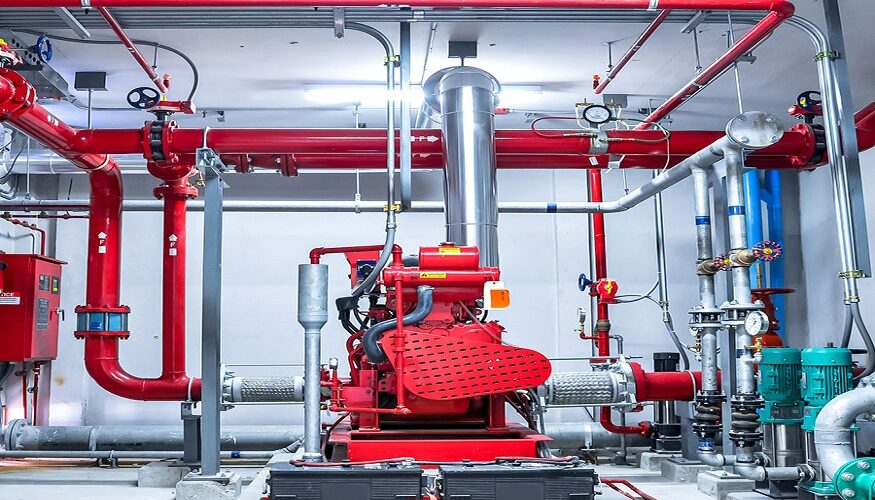Chemical plants handle energetic materials, hot processes and busy logistics. Fire protection only shines when it is built into the design, not bolted on after commissioning. A plant that plans for credible worst cases, trains its people and maintains its barriers will keep incidents small and recover quickly. For local context and practical support, providers such as fire protection Sydney show how design choices meet day-to-day operating needs.
Start with Risk, Not Equipment
Map inventories, temperatures, pressures and release points from feedstock delivery through to finished product. Note where vapours can accumulate, where static can build, and which operations invite ignition. A structured hazard study helps pinpoint scenarios that matter: pump seal failure, tank overfill, thermal runaway, and hot work near process lines. Separate fuels from flames. Good design places relief vents away from air intakes, keeps electrical gear out of classified zones and chooses materials that tolerate heat without shedding toxic smoke.
Prevent First, Then Suppress
Fire protection begins with basic engineering: inerting with nitrogen where oxygen feeds combustion, effective ventilation in enclosures, and robust earthing and bonding around transfer points. Designers set plant drainage to capture firewater, stopping contaminated runoff from reaching waterways. Passive fire protection earns its keep by buying time. Fire-resistant walls around control rooms, fireproofed structural steel in pipe racks and barriers between storage tanks all slow escalation and keep access routes open for crews.
Detect Early and Say It Clearly
The right sensor in the right spot can cut minutes off a response. Open process areas often suit UV/IR flame detectors; enclosed rooms respond better to rate-of-rise heat or multi-criteria smoke detectors that avoid false alarms from steam or dust. Alarms must be audible and visible over plant noise, with messages that tell operators what to do, not just what went off. Tie detection to automatic actions where sensible, such as tripping feed pumps or closing remotely operated valves to starve a flame.
Match Suppression to The Hazard
There is no single system that fits every plant. Sprinklers manage many solid-fuel fires and provide cooling to stop neighbouring equipment from failing. Deluge systems blanket high-hazard areas like pump bays and loading gantries. Hydrocarbon spills often need foam to smother vapours; dry chemical units hit flammable gas fires fast. Water mist can protect sensitive rooms where overspray would damage equipment. Size firewater pumps and ring mains for redundancy, and place hydrants so crews never run hose across evacuation paths. Experienced teams from fire protection companies Sydney can help set performance targets such as application rates, coverage and run time rather than relying on a single prescriptive recipe.
Get the Layout Right
Thoughtful spacing limits domino effects. Keep bulk storage apart from process units, keep gas cylinders out of sun-soaked pockets, and maintain clear access roads wide enough for appliances to pass. Provide multiple egress routes that do not cross likely leak sources. Mark refuges and muster points where wind and terrain won’t funnel smoke. Simple details such as non-combustible cladding on cable trays or fire-stopping at wall penetrations reduce the chance of hidden fire spread.
Plan with Responders and Neighbours
Fire protection comes alive when people practise. Share site diagrams, chemical inventories and shut-down procedures with local brigades. Run joint drills that test alarms, communications and hydrant flows. Rehearse night-shift scenarios and contractor workdays, not just tidy daytime exercises. Coordinating with providers like fire services Sydney helps align on appliance placement, foam stocks and the practicalities of entering process areas under breathing apparatus.
Operate, Maintain, and Verify
A strong regime keeps systems ready. Inspect valves, strainers and diesel fire pumps on a defined schedule; test detectors and notification systems and record results that engineers can trend. Track impairments, log by-pass valves and keep spare parts that fail predictably. Training should cover extinguisher use, hot-work permits and emergency shutdowns, with refreshers for new shifts and contractors. Many sites bundle activities under fire maintenance Sydney agreements that include call-outs, testing and reporting. Routine Fire Inspection Sydney practices give managers confidence that changes in production, staffing or layout have not created blind spots.
Choose products and partners with care
Not all equipment is equal. Look for third-party approvals, compatibility with site media and clear installation guidance. Keep documentation handy, from hydraulic calculations to cause-and-effect charts, so operators understand what each device will do. Procurement should weigh service coverage, response times and spare availability, not just list price. Qualified Fire Contractors Sydney help translate performance goals into drawings, specifications and commissioning tests that stand up during audits and emergency reviews.
Build A Safety Culture That Lasts
Design sets the stage, yet everyday decisions decide outcomes. Encourage staff to report near misses, tidy combustible waste and challenge unsafe shortcuts. Tie management of change to fire risk, so a new solvent or a shift in packaging does not quietly undercut earlier safeguards. After any incident or alarm, conduct a brief, blame-free review of what worked and what did not, then update procedures and training. Small, steady improvements keep protection aligned with reality.
Where to Start If Your Plant Is Established
Walk the site with fresh eyes and focus on high-energy areas: tank farms, compressor stations, ovens and reactors. Validate that detectors still see the right zones and that deluge sprays still hit the targets they were meant to protect. Confirm that emergency isolation valves close as designed and that power supplies, diesel tanks and switchboards remain protected from heat and smoke. If you need a quick win, book a fire extinguisher service near me check and refresh operator training; extinguishers and confident people stop small fires before they grow.
Designing safer chemical plants is a practical exercise. Start early, choose prevention first, select detection and suppression that fit the real hazards, and keep systems healthy through inspection and drills. The outcome is not just compliance. It is a site that runs reliably, protects its people and neighbours, and recovers quickly when something goes wrong.

